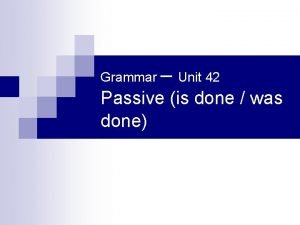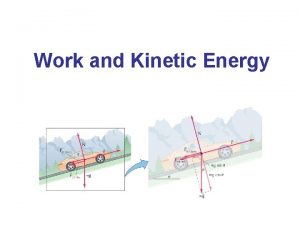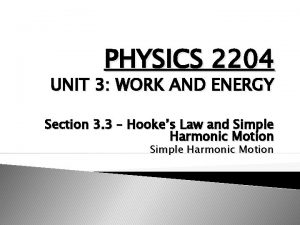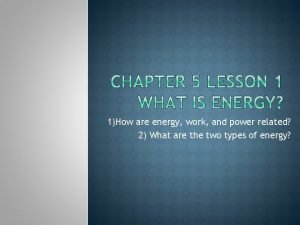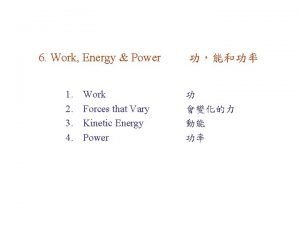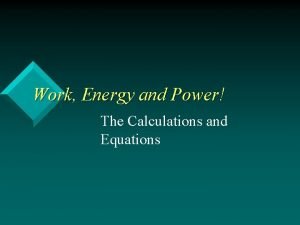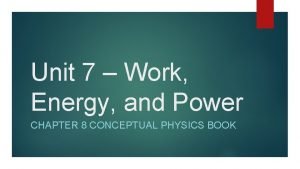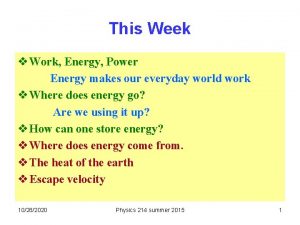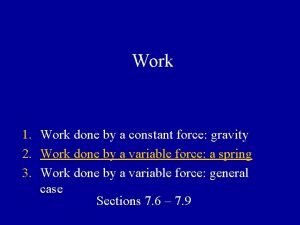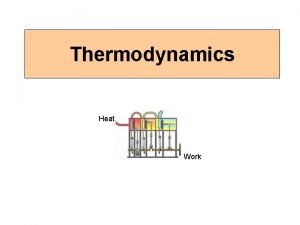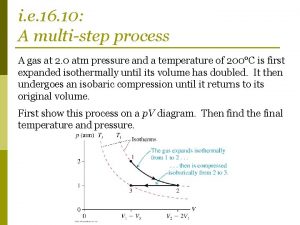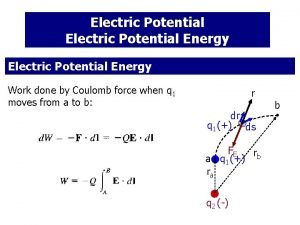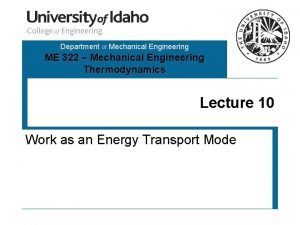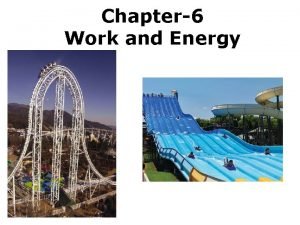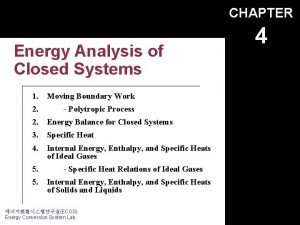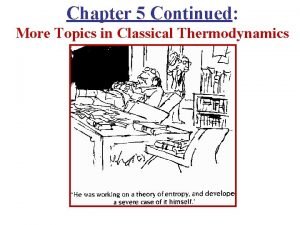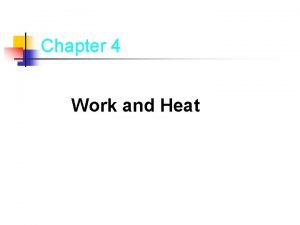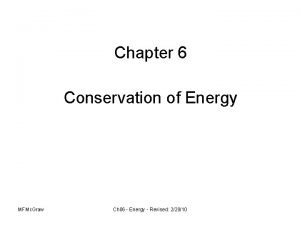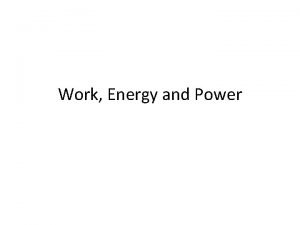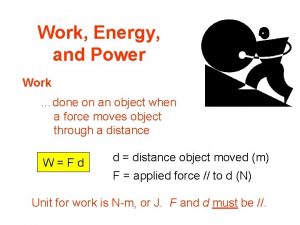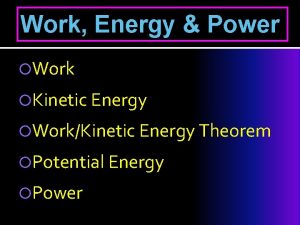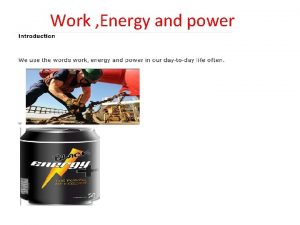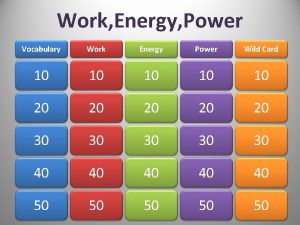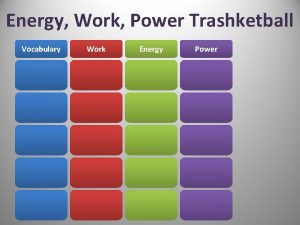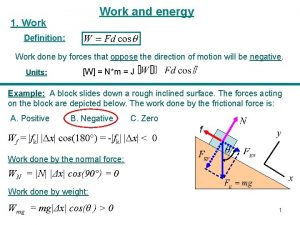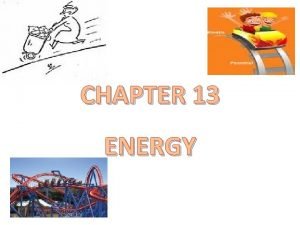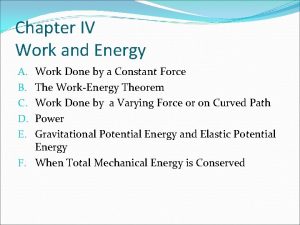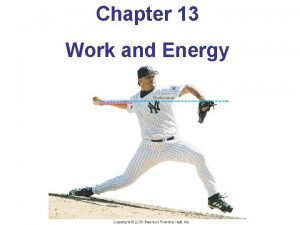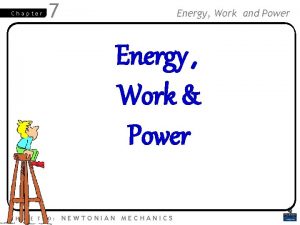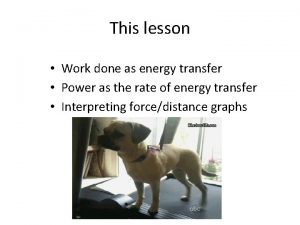CHAPTER 8 WORK ENERGY POWER WORK is done



































- Slides: 35

CHAPTER 8 WORK, ENERGY & POWER

WORK is done on an object when: 1. The object moves AND 2. A force is acting on the object partly or entirely in

WORK Work done is measured as the product of the force and the distance the object moves in the direction of the force. It is the transfer of energy through motion.

Work = Force x Distance W=Fxd W Joule (J) F Newton (N) d Meters (m)

Work is done only when the force is exerted in the direction of motion. F d

NO WORK!

JOULE One Joule (J) equals the work done by a force of one Newton that moves an object a distance of 1 m. The S. I. Unit of Work is Joules. 1 Joule = 1 Newton x 1 meter 1 J = 1 Nm

JOULE 1 Kilojoule = 1000 Joules 1 k. J = 1000 J


PROBLEM #1 A student lifts a box that weighs 185 N. The box is lifted 0. 800 m. How much work does the student do?

PROBLEM #2 A person uses a force of 7 N to drag a garbage can a distance of 15 m. How much work is done on the garbage can?

PROBLEM #3 Two people push against a stalled car. If each person pushes with a force of 35 N, how far will the car move if the total work done is 140 J?

PROBLEM #4 A sailor pulls a boat along a dock using a rope at an angle of 60° with the horizontal. How much work is done by the sailor if he exerts a force of 255 N on the rope and pulls the boat 30 m.


WHAT DO YOU THINK? 1. When is work done on an object? When a force applied to an object causes it to move a certain distance in the direction of the force.

WHAT DO YOU THINK? 2. On what factors does the magnitude of work depend upon? The force applied, the distance covered, and the angle between the force applied and the distance covered.

WHAT DO YOU THINK? 3. Is work done when you push a rock and the rock does not move? NO

POWER Power is the rate at which work is done. Power = Work/time P Watt (W) W Joule (J) t second (s)

PROBLEM #15 How long does it take a 19 k. W steam engine to do 6. 8 x 107 J of work?

ENERGY is defined as the ability to cause change An object has energy when it is able to change its environment. Forms of Energy: Mechanical (Potential and Kinetic) Non mechanical (radiant, thermal, chemical, electrical and nuclear)

KINETIC ENERGY Kinetic energy is the energy associated with moving objects Examples: a spinning wheel a fast-moving car a baseball hit by a bat

KINETIC ENERGY The kinetic energy of an object depends upon its mass and velocity. KE = ½ mv 2 KE Joules (J) m kilogram (kg) v meter/second (m/s)

1. The greater the speed of a moving object, the greater the kinetic energy. 2. The greater the mass of a moving object, the greater the kinetic energy.

PROBLEM #11 What is the kinetic energy of a person with a mass of 55 kg and a speed of 5 m/s?

WORK-ENERGY THEOREM When there is a change in kinetic energy, work is done. W = ΔKE = KEf - KEi

PROBLEM #13 A shot putter heaves a 7. 26 kg shot with a final velocity of 7. 5 m/s. A) what is the kinetic energy of the shot? B) The shot was initially at rest. How much work was done on it to give it this kinetic energy?


POTENTIAL ENERGY Stored energy, the object has the potential for doing work. Examples: a boulder sitting on a cliff (PEg) a stretched or compressed spring (PEsp) chemical energy in fuels

GRAVITATIONAL POTENTIAL ENERGY The gravitational potential energy (PEg) of an object depends on its mass, distance above the ground and gravity

GRAVITATIONAL POTENTIAL ENERGY PE = mgh PE Joules (J) m kilogram (kg) g meter/second 2 (m/s 2) h meter (m)

GRAVITATIONAL POTENTIAL ENERGY 1. The greater the mass the greater the potential energy. 2. The greater the height the greater the potential energy.

PE EXAMPLE A 100 kg boulder rest on the edge of a cliff. If the cliff is 75 m high, what is the PE in the boulder? m = 100 kg h = 75 m g = 9. 8 m/s 2 PE = mgh = 100(9. 8)(75) = 73500 J

LAW OF CONSERVATION OF ENERGY Energy cannot be created or destroyed. It can be transformed from one form into another, but the total amount of energy never changes.

EXAMPLE A 100 kg boulder rest on the edge of a cliff that is 75 m high. If the boulder falls, what is its velocity just before it hits the ground?

EXAMPLE From PE example: PE = 73500 J Due to conserv. of energy: PE = KE 2 73500 = ½ mv 73500 = ½ (100)v 2 v = ((2 73500)/100) = 38. 3 m/s
 Unit 42 passive 1 is done was done answer
Unit 42 passive 1 is done was done answer Cutter mill is fitted with__________ knives.
Cutter mill is fitted with__________ knives. Aldanma cahilin kuru lafına
Aldanma cahilin kuru lafına Work done and kinetic energy
Work done and kinetic energy Chapter 4 work and energy section 1 work and machines
Chapter 4 work and energy section 1 work and machines Power triangle diagram
Power triangle diagram Intelligent sharing of power is done among:
Intelligent sharing of power is done among: Energy energy transfer and general energy analysis
Energy energy transfer and general energy analysis Energy energy transfer and general energy analysis
Energy energy transfer and general energy analysis Regents physics work power energy
Regents physics work power energy Work, power and energy activities
Work, power and energy activities Unit of resistivity
Unit of resistivity Physics 2204 unit 3: work, power, energy
Physics 2204 unit 3: work, power, energy Define workdone
Define workdone How are work and power related
How are work and power related Work power energy and machines
Work power energy and machines W=fdcosθ meaning
W=fdcosθ meaning Work power and energy
Work power and energy Work energy power equations
Work energy power equations Unit 7 work energy and power answers
Unit 7 work energy and power answers F= ma units
F= ma units Work and energy section 2 describing energy
Work and energy section 2 describing energy The work done by gravity during the descent of a projectile
The work done by gravity during the descent of a projectile Work done pressure volume
Work done pressure volume Work done by isothermal process
Work done by isothermal process Work done by charge
Work done by charge What is a polytropic process in thermodynamics
What is a polytropic process in thermodynamics Site:slidetodoc.com
Site:slidetodoc.com Energy analysis of closed systems
Energy analysis of closed systems Cp/cv = gamma
Cp/cv = gamma Work done in polytropic process
Work done in polytropic process Gaya tetap adalah
Gaya tetap adalah Energy enables you to work and play
Energy enables you to work and play Work done by normal force
Work done by normal force Definition of work in physics
Definition of work in physics What is principle of virtual work? *
What is principle of virtual work? *
